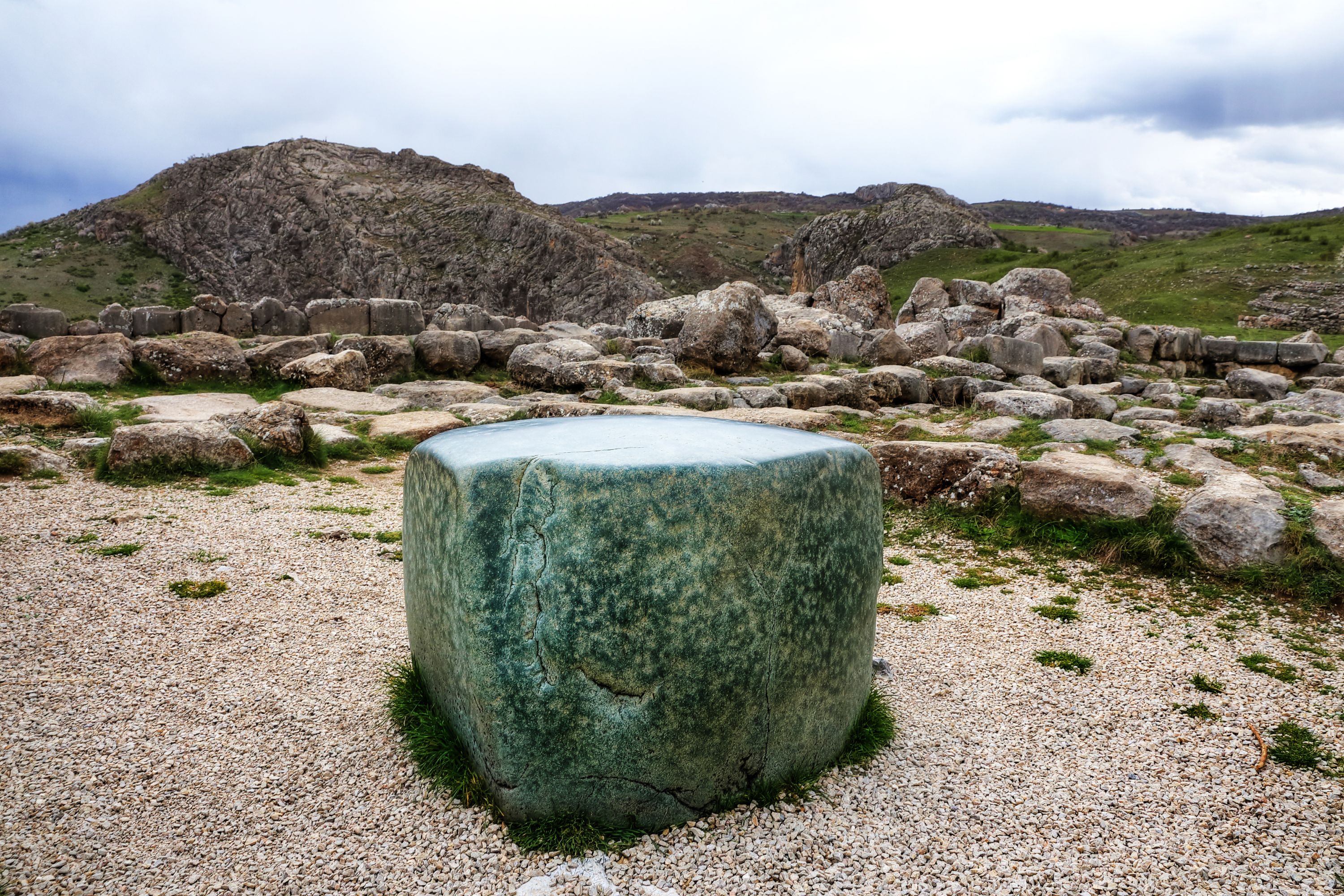Within The Ancient Temple Of Hattusa In Turkey Lies A Green “Wishing Stone” That’s Believed To Have Magical Powers, Granting Wishes To Locals Who Place Their Hands On It

Lying within the remains of the ancient temple of Hattusa in central Turkey is a smooth, green boulder with magical powers carved into the shape of a cube.
To the locals in the area, it is a “wishing stone” that will grant the wishes of whoever places their hands on it.
The purpose of the stone is unclear, as archaeologists have been unable to get to the bottom of the mystery.
The temple is one of the most significant structures at Hattusa, which was the capital city of the Hittite empire.
The Hittites settled in the region around 2000 B.C.E. and became one of the first major powers of the late Bronze Age in the Middle East.
At the height of the civilization, Hattusa was likely home to between 40,000 and 50,000 people. The settlement was abandoned sometime around 1200 B.C.E.
In 1834, archaeologists began to conduct excavations at the site, uncovering the Grand Temple and the green stone.
The Grand Temple dates back to the 13th century C.E. and is the most well-preserved Hittite temple in the world. It was erected in honor of Teshub, the storm god, and the Sun goddess Arinna.
The stone sits near the main entrance of the temple. The polished hunk of rock weighs 2,200 pounds and has been worn smooth due to exposure to the elements and human hands.
Selcuk – stock.adobe.com – illustrative purposes only
Sign up for Chip Chick’s newsletter and get stories like this delivered to your inbox.
It is thought to be made of serpentinite or nephrite (jade). Its position at the front of the temple suggests that it once held religious significance, especially since cults were plentiful in the Hittite empire.
However, no other green stone has been found elsewhere in the region, even though nephrite was in abundance. Some experts speculate that it was carried over 300 miles from the Taurus mountains to southern Hattusa.
The stone may have been nothing more than a base for a statue. On the other hand, it could have been a throne for the king to sit on during religious rituals or served as a ceremonial altar.
There is no definitive evidence to confirm the function of the rock. Unless more groundbreaking discoveries are made, its origin and purpose may be unknown forever.
Welcome to Billionaire Club Co LLC, your gateway to a brand-new social media experience! Sign up today and dive into over 10,000 fresh daily articles and videos curated just for your enjoyment. Enjoy the ad free experience, unlimited content interactions, and get that coveted blue check verification—all for just $1 a month!
Account Frozen
Your account is frozen. You can still view content but cannot interact with it.
Please go to your settings to update your account status.
Open Profile Settings